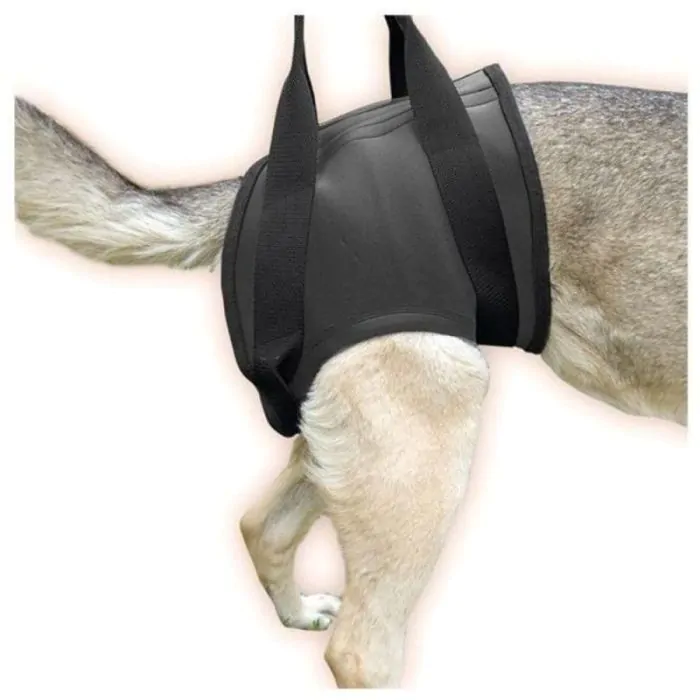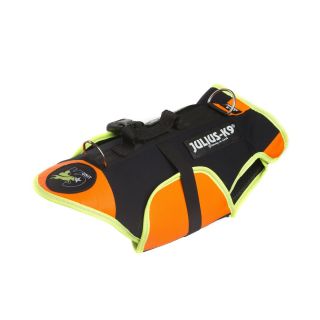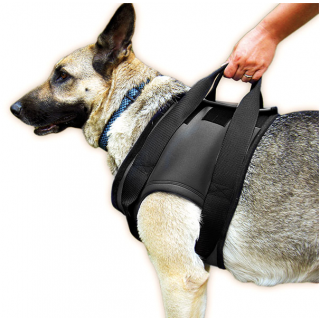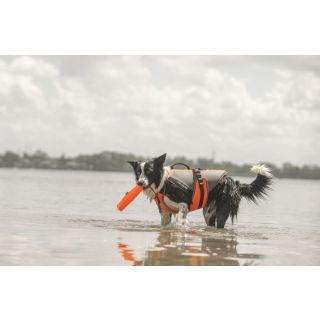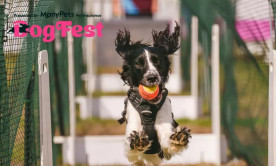A rehabilitation or a lift support dog harness are aids that can be used to help dogs with short or long term mobility issues. They are designed to make it safer for owners to move dogs with disabilities, injuries or paralysis while also keeping the dog comfortable. Using a support harness improves a dog’s, and owner’s, quality of life by making everyday actives easier like getting in and out of cars, going up stairs, and going outdoors.
Why your dog might need a support harness
Common reasons people use support harnesses include:
Post-surgery
Even minor surgeries can leave dogs struggling to move comfortably. Using a support and lift harness can help your dog keep their weight off the operated area when you need to get your dog out of the car, or onto the sofa.
Minor Injuries
Just like their owners, dogs can injure themselves through accidents or over excursion. Some breeds are more prone to injuries than others making sprains and torn muscles more frequent. This is why some owners like having a support or rehabilitation harness at home so they can help keep their pet comfortable while they recover. Keeping your dog off their injury can also help speed up the recovery time.
Dog arthritis
Arthritis is quite common in dogs and is caused by the deterioration of cartilage in joints. This can make it very difficult and painful for dog’s to move around. Support harnesses can help maintain your dog’s quality of life by making it easier and more comfortable to move them around.
Older dogs
As dogs get older they may need help with their overall mobility. Lifting harnesses help senior dogs on the stairs, get out of cars, and can even help easily move them into a better position to cut their nails.
Lifting larger breeds and helping smaller dogs
Dog support harnesses aren’t just used by owners for medical reasons, there might also be everyday practical reasons too. Common uses include helping to handle larger breeds while out on walks, or even smaller dogs walk up a large set of stairs or navigating through huge crowds. While a rehabilitation harness might not be suitable for managing bigger dogs, support harnesses with handles can make it easier to hold and manage big dogs.
Types of support and rehab harness
Every dog will have unique mobility needs so choosing the right harness to aid them is important.
Front lifting harness
A front lift rehab harness sit around the chest and under their neck. They’re designed for lifting a dog’s front legs and used for dogs with issues in the following areas:
- Shoulders
- Elbows
- Front paws and legs
- Neck
- Front Pastern
Hind leg lifting harness
Rear leg harnesses support your pet’s weight under the abdomen or under the back legs to make lifting easier, safer, and more comfortable for dogs with hind leg issues. Mobility problems in dogs are more frequent in their hind legs with knee, hip dysplasia, and muscle tears being some of the more common injures to occur in the rear legs.
Rear support harnesses are used on dogs with issues in the following areas:
- Back
- Tail set and tail
- Thigh
- Hips
- Hock
- Hind feet
- Knee/stifle
- Rear pastern
Fully body vest support
A full body rehabilitation harness is a vest-like design that supports your dog’s front and back legs while evenly distributing weight across the centre of the dog’s body. These harnesses make lifting safer for both the dog and the owner and gives you more control when carrying your dog.
Carry harness
These harnesses are designed especially for carrying dogs and have thick, highly durable carry handles. Pet owners can find this helpful if they need to carry their dog for longer instances, such as carrying their dog down stairwells or to and from their car.
Some carry harness designs like the JULIUS-K9® Dog Carrier Harness even have features to allow owners to fix the harness to their chest or back. This feature is normally used in rescue or emergency situations for working canines.
Training your dog to wear their support harness
If your dog needs a rehabilitation or support harness, then you might need to spend some time training them so they are comfortable wearing it.
Getting the right fit
The fit of a support harness is important. The wrong size could be uncomfortable and increase your dog’s resistance to wearing it. A poorly fitted harness could also be dangerous for dogs with medical conditions as the harness might not provide enough support or apply pressure to injured areas.
See our The Importance of a Correctly Fitted Harness advice and our official Harness Measuring Guide for more information.
Quick tips for getting your dog comfortable with their support harness
- Rewarding your dog treats to put them at ease.
- Show your dog the harness.
- Let your dog sniff the harness.
- Place treats on the harness for your dog to eat.
- Introduce your dog to the sounds of harness, such as the fixing buckle.
- Gently touch the harness against you dog.
- Get your dog to eat treats through the dog harness.
- Slowly ease the dog into the harness, without fixing the buckles.
- Take the harness off your dog.
- You are now ready to slip the harness onto the dog and fix the buckles.
See our Training Your Dog to Wear a Harness for more details.


